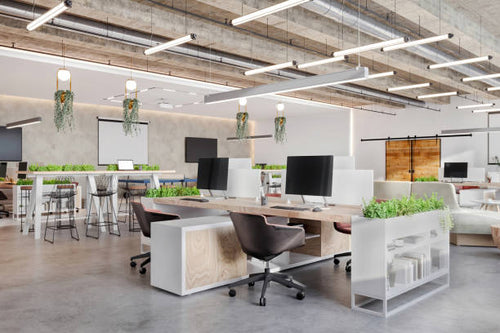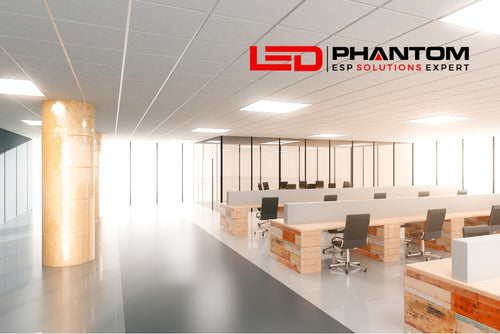May The 4th Be With You – 4 Ways Lighting Controls Can Save You Money | LED Phantom
May 4th is often known as Star Wars day, it’s due to the play on words between “May the fourth (be with you)” and the famous Star Wars line that is “May the force be with you”. The way of the Jedi is an ancient art and many of us may be too old to begin the journey, but - have no fear, our wide variety of Lighting controls will give you unlimited power!
Ever wondered how to lighting controls can actually save you money? Well in this blog, to celebrate Star Wars day, we’re going to teach you the ways of the Jedi allowing you to do just that! So clear your mind and let’s begin…
Every lamp and luminaire require some control device and a strategy about how to use that control. It can be your basic, on-and-off wall switch, a set of motion sensors, or with today’s modern technologies, something more—a lot more.
Because of a growing demand to cut energy use, adhere to stricter building energy codes and increase flexibility for visual needs and user satisfaction, today’s lighting controls have evolved beyond just adjusting output and turning lights on and off.
Today, these strategies automatically change light-source color and intensity. They monitor daylight levels and reduce operational costs. They also offer a digital pathway to IoT-enabled services and are becoming part of many building automation systems.
They are also inherently personal, allowing you to program your space’s lighting to suit your needs and preferences or your clients.
Let us look at some of the conventional LED lighting strategies architects, designers, engineers and building owners use to attain significant energy savings while enhancing occupant comfort and productivity.
Occupancy Sensing Saves Up To 60% in Lighting Load
Occupancy sensors are devices that automatically turn fixtures on and off based on whether the space is occupied.
They are also the most common lighting control method used today. Reports show they can save between 20% and 60% in lighting load.
Occupancy sensors are well-suited for smaller, enclosed spaces intermittently occupied, such as private offices, classrooms, conference rooms, copy rooms, breakrooms, and restrooms.
They can also be networked for larger spaces.
There are two other similar sensors to keep in mind. One is a vacancy sensor, which provides automatic shutoff but needs to be manually turned on. The other is a partial-on occupancy sensor, which tunes the lighting load to 50 percent on automatically. With the latter, you manually need to hit a switch to turn the lights on all the way.
You can leverage occupancy sensors to control not only general lighting but also a building’s task lighting and other plug loads, such as computer monitors.
Depending on the controls used, the same occupancy sensors that control the lighting can be connected to a building’s HVAC system. So, when the space is empty, the lights, plug loads and air conditioning turn off automatically.
Plan Your Energy Savings with Time Scheduling
lighting output automatically adjusts to a schedule set by a timeclock set by a microprocessor built into the control system, which makes turning the lights off after regular business hours a cinch.
It can also reduce lighting energy use between 10% and 20%.
You can also program fixtures to dim at certain times of the day. More advanced systems allow you to schedule your lighting around certain days of the week or even holidays, making sure the lights are on precisely when needed and off when they are not.
In these strategies, local override wall controls allow for irregular use of the space.
Time scheduling is ideal for building automation applications. If a building has a predictable pattern of use, then a time-scheduling control system can be used to regulate the building’s lighting structure.
Daylight Harvesting Adjusts Lighting With the Sun
Daylight harvesting uses a light sensor with a power controller, called a photosensor, to dim or adjust its fixtures’ lighting levels in response to daylight.
This solution calculates light levels to take advantage of natural sunlight while providing the convenience and comfort of automated lighting. The more natural light in a room, the more the control system dims the lamps to an appropriate level.
Daylight harvesting is an excellent strategy for zones with windows, skylights and clerestories, spaces where daylight is consistent and abundant. It is also a great energy saver—up to 60%, statistics show.
Tune Your Light To Your Liking
This strategy goes by a few names. They include “task tuning,” “institutional tuning” and “high-end trim.”
Regardless of the label, they all achieve the same design principle, which sets a certain light level based on occupant requirements in a location.
Lighting levels within a space are tuned to less than 100%, and studies have shown that the human eye can hardly perceive a reduction of up to 20%.
Like other LED lighting strategies, the accompanying energy savings is the cherry on top: between 10% and 30%.
Research shows that lighting can comprise up to 60% of your facility’s electrical bill and 40% of its total energy bill, it is no wonder automated LED lighting controls are in the limelight.
As building codes get stricter and the world increasingly becomes more driven by efficiency and data collection, the spotlight will only get brighter—and the above strategies more diverse.
Ready to learn more?
To learn more about how code compliance is increasing the need for advanced lighting controls. Give one of our lighting experts a call at 630-225-9300 or contact us today!


